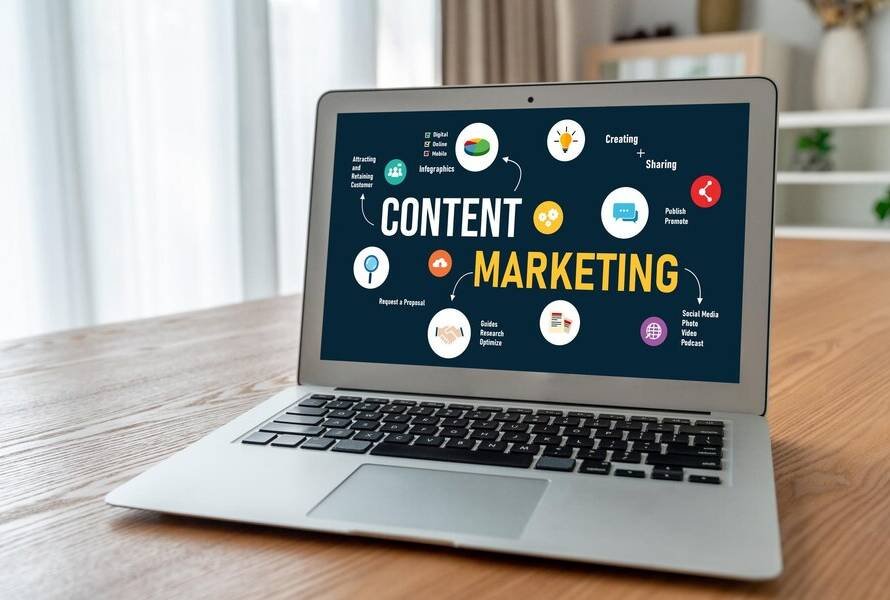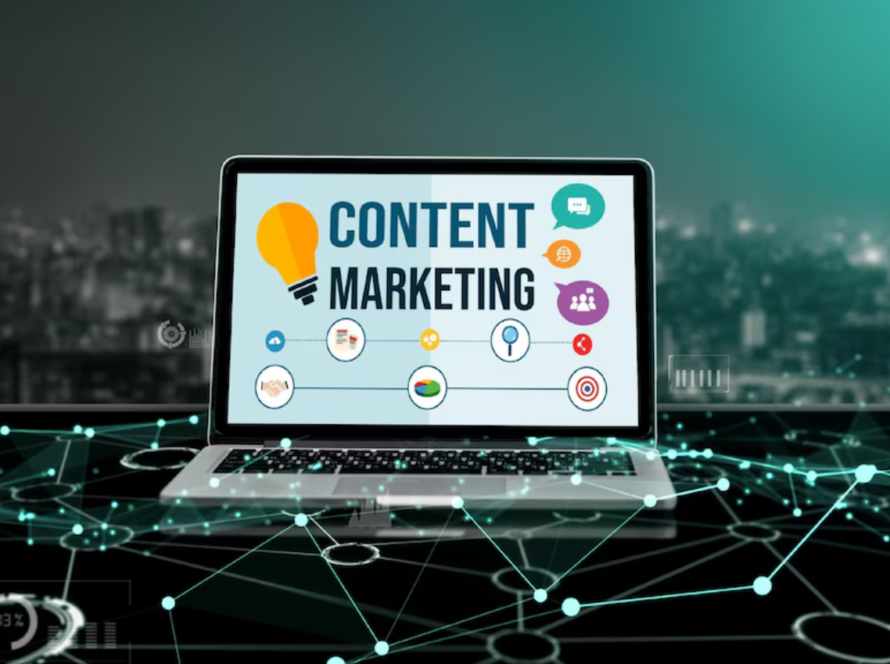Content mapping is a strategic process that aligns your content with the needs of your audience and their journey through the sales funnel. By understanding your audience’s behavior, interests, and pain points at each stage of their buying journey, you can create targeted content that not only engages but also drives conversions. In this comprehensive guide, we will explore what content mapping is, its importance in SEO, and how to create an effective content map to boost your SEO efforts.
What is Content Mapping?
Content mapping is the process of creating content tailored to each stage of a buyer’s journey, from awareness to consideration to decision. It involves understanding the different personas within your target audience and addressing their specific needs with relevant content at each stage of their journey.
The Buyer’s Journey
The buyer’s journey typically consists of three stages:
- Awareness Stage: The potential customer realizes they have a problem or need. They are seeking information to understand their issue better.
- Consideration Stage: The potential customer defines their problem or need and begins exploring potential solutions.
- Decision Stage: The potential customer decides on a solution and evaluates different products or services to make a final purchasing decision.
Buyer Personas
A buyer persona is a semi-fictional representation of your ideal customer based on market research and real data about your existing customers. Creating detailed personas helps you understand your audience better and create content that resonates with them.
Importance of Content Mapping in SEO
Content mapping is crucial for several reasons:
- Improves User Experience: Providing relevant content that addresses the specific needs of your audience at each stage of their journey enhances user experience, increasing engagement and satisfaction.
- Enhances SEO: By creating targeted, valuable content, you can improve your search engine rankings. Search engines prioritize content that is relevant and provides value to users.
- Increases Conversions: Tailoring content to each stage of the buyer’s journey helps guide potential customers toward making a purchase, boosting conversion rates.
- Builds Authority: Consistently producing high-quality, relevant content establishes your brand as an authority in your industry, leading to higher trust and credibility.
Steps to Create an Effective Content Map
Creating a content map involves several key steps, from defining your buyer personas to aligning content with the stages of the buyer’s journey. Here’s a detailed guide to help you create an effective content map.
Step 1: Define Your Buyer Personas
To create relevant content, you first need to understand who your audience is. Developing detailed buyer personas involves gathering demographic and psychographic information about your target audience. Here’s how to get started:
Gather Data
Collect data from various sources, including:
- Customer Surveys: Conduct surveys to gather insights about your customers’ needs, preferences, and behaviors.
- Website Analytics: Use tools like Google Analytics to understand how users interact with your website.
- Social Media Insights: Analyze engagement metrics on social media platforms to understand what type of content resonates with your audience.
- Customer Interviews: Conduct interviews with existing customers to gain deeper insights into their experiences and pain points.
Identify Key Information
Develop a detailed profile for each persona, including:
- Demographics: Age, gender, location, education, occupation, income level.
- Psychographics: Interests, values, lifestyle, challenges, goals.
- Behavioral Patterns: Online behavior, content preferences, purchasing behavior.
Step 2: Map the Buyer’s Journey
Next, map out the buyer’s journey for each persona. Understand the specific questions, concerns, and needs at each stage of the journey.
Awareness Stage
In the awareness stage, potential customers are identifying their problem or need. They are looking for educational and informative content. Types of content that work well in this stage include:
- Blog Posts: Write informative articles that address common problems and provide valuable insights.
- Infographics: Create visually appealing infographics that simplify complex information.
- Ebooks and Whitepapers: Offer in-depth guides that provide detailed information on relevant topics.
Consideration Stage
In the consideration stage, potential customers are exploring different solutions to their problem. They are looking for content that helps them evaluate their options. Types of content for this stage include:
- Case Studies: Share success stories and examples of how your product or service has helped others.
- Webinars: Host webinars that provide in-depth information and answer common questions.
- Comparison Guides: Create guides that compare different solutions and highlight the benefits of your offering.
Decision Stage
In the decision stage, potential customers are ready to make a purchase. They are looking for content that helps them make an informed decision. Types of content for this stage include:
- Product Demos: Offer live or recorded demos of your product or service.
- Customer Testimonials: Share testimonials and reviews from satisfied customers.
- Discounts and Offers: Provide special offers or discounts to incentivize purchases.
Step 3: Conduct a Content Audit
Before creating new content, conduct a content audit to assess your existing content. Identify gaps and opportunities for improvement.
Inventory Your Content
List all your existing content, including blog posts, ebooks, webinars, case studies, and more. Use a spreadsheet to organize your content by type, topic, and stage of the buyer’s journey.
Analyze Performance
Evaluate the performance of your content using metrics such as:
- Traffic: Number of visits to each piece of content.
- Engagement: Time spent on page, bounce rate, social shares, comments.
- Conversions: Leads generated, conversion rate, sales.
Identify Gaps
Identify content gaps by comparing your existing content with the needs of your buyer personas at each stage of the buyer’s journey. Determine which topics and types of content are missing or need improvement.
Step 4: Create a Content Plan
Based on your content audit, create a content plan that outlines the topics, types, and formats of content you need to create for each stage of the buyer’s journey.
Set Content Goals
Define specific goals for your content, such as:
- Increase Website Traffic: Create blog posts and infographics to attract more visitors to your site.
- Generate Leads: Offer ebooks and webinars to capture leads and build your email list.
- Drive Conversions: Create case studies and product demos to convert leads into customers.
Develop a Content Calendar
Create a content calendar to plan and schedule your content. Include the following details:
- Topics: List the topics for each piece of content.
- Content Types: Specify the type of content (e.g., blog post, ebook, webinar).
- Publishing Dates: Set deadlines for creating and publishing each piece of content.
- Responsible Team Members: Assign team members responsible for creating, editing, and publishing content.
Step 5: Optimize Content for SEO
Optimizing your content for SEO is crucial for improving its visibility and ranking on search engines. Here are some key SEO practices to follow:
Keyword Research
Conduct keyword research to identify the keywords and phrases your target audience is searching for. Use tools like Google Keyword Planner, SEMrush, or Ahrefs to find relevant keywords.
On-Page SEO
Optimize your content for on-page SEO by:
- Including Keywords: Incorporate target keywords naturally in the title, headings, and body of your content.
- Optimizing Meta Tags: Write compelling meta titles and descriptions that include target keywords.
- Using Internal Links: Link to other relevant content on your website to improve navigation and SEO.
- Adding Alt Text: Use descriptive alt text for images to improve accessibility and SEO.
Content Quality
Ensure your content is high-quality, informative, and engaging. This includes:
- Originality: Create unique content that provides value to your audience.
- Readability: Write in a clear, concise, and easy-to-read style.
- Visuals: Use images, infographics, and videos to enhance your content.
Mobile Optimization
Ensure your content is optimized for mobile devices. This includes:
- Responsive Design: Use a responsive design that adapts to different screen sizes.
- Fast Loading Times: Optimize images and reduce file sizes to improve loading times on mobile devices.
- Easy Navigation: Make sure your content is easy to navigate on mobile devices.
Step 6: Promote and Distribute Content
Creating great content is just the first step. You also need to promote and distribute it to reach your target audience. Here are some effective ways to promote your content:
Social Media
Share your content on social media platforms to increase visibility and engagement. Use the following strategies:
- Post Regularly: Share your content consistently on platforms like Facebook, Twitter, LinkedIn, and Instagram.
- Engage with Your Audience: Respond to comments, answer questions, and engage with your audience to build relationships and trust.
- Use Hashtags: Use relevant hashtags to increase the reach of your content.
Email Marketing
Use email marketing to distribute your content to your subscribers. This includes:
- Newsletters: Send regular newsletters with links to your latest content.
- Personalized Emails: Segment your email list and send personalized emails with content tailored to each segment.
- Automated Campaigns: Set up automated email campaigns to nurture leads and guide them through the buyer’s journey.
Influencer Marketing
Collaborate with influencers in your industry to promote your content. This includes:
- Guest Blogging: Write guest posts for influential blogs and include links to your content.
- Social Media Mentions: Ask influencers to share your content on their social media platforms.
- Collaborative Content: Create collaborative content, such as interviews or co-authored articles, with influencers.
Step 7: Measure and Analyze Performance
Regularly measure and analyze the performance of your content to understand what’s working and what needs improvement. Use tools like Google Analytics, SEMrush, and social media analytics to track key metrics.
Key Metrics to Track
- Traffic: Measure the number of visitors to your content.
- Engagement: Track metrics such as time spent on page, bounce rate, social shares, and comments.
- Conversions: Measure the number of leads generated, conversion rate, and sales.
- SEO Performance: Track keyword rankings, organic traffic, and backlinks.
Analyze Results
Analyze the data to identify trends and insights. Determine which content is performing well and why. Use this information to refine your content strategy and improve future content.
Step 8: Continuously Optimize and Improve
Content mapping is an ongoing process. Continuously optimize and improve your content based on performance data and feedback from your audience.
Regularly Update Content
Keep your content fresh and relevant by regularly updating it. This includes:
- Refreshing Old Content: Update outdated information and add new insights to older content.
- Expanding Content: Add more depth and detail to your content to make it more valuable and comprehensive.
- Fixing Broken Links: Regularly check for and fix broken links to improve user experience and SEO.
Experiment with New Formats
Experiment with different content formats to see what resonates best with your audience. This includes:
- Video Content: Create videos to engage your audience and provide valuable information in a dynamic format.
- Interactive Content: Use interactive content such as quizzes, polls, and calculators to increase engagement.
- Podcasts: Start a podcast to share insights and connect with your audience on a more personal level.
Conclusion
Mastering content mapping is essential for creating a strategic and effective content marketing plan that boosts your SEO and drives business results. By understanding your audience, mapping their journey, creating targeted content, and continuously optimizing your strategy, you can enhance user experience, improve search engine rankings, and increase conversions. Content mapping is an ongoing process that requires regular updates, analysis, and optimization to stay ahead in the competitive digital landscape. By following the steps outlined in this guide, you can create a powerful content map that aligns with your business goals and drives success.
Welcome to SEM Spartans, where knowledge is power, and the possibilities are endless. Our mission is to educate, inspire, and empower our readers to become digital savvy marketers. Whether you’re a business owner looking to expand your online presence, a marketing professional seeking to enhance your skills, or an aspiring entrepreneur eager to learn the ropes of digital marketing, SEM Spartans is your trusted digital blog platform.



